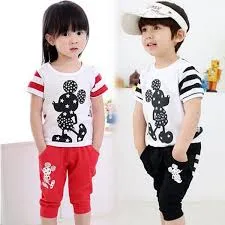-
×
 Boys and girls solid color vest, large size 8/14 years old 1 × $978.00
Boys and girls solid color vest, large size 8/14 years old 1 × $978.00 -
×
 H546 Newborn set-SS01_ 9/36m printed 1 × $456.00
H546 Newborn set-SS01_ 9/36m printed 1 × $456.00
News
More Than a Match: The Enduring Allure and Psychology of the “Mini-Me” Fashion Trend
Scroll through any social media feed, and you’re bound to see it: a celebrity mother and her daughter in identical breezy sundresses, a father and son sporting matching sneakers and graphic tees, or an entire family on a beach, clad in a perfectly coordinated palette of sunset hues. This is the “Mini-Me” trend—the deliberate choice of parents and children to dress in identical or complementary outfits. It’s a visual statement that is at once charming, heartwarming, and deeply fascinating.
While it may seem like a modern phenomenon born from the age of Instagram, the practice of “twinning” has a surprisingly rich history. What was once a subtle nod to family unity or a privilege of the elite has exploded into a global mainstream movement, supercharged by social media and embraced by high-fashion houses and budget-friendly retailers alike. The trend has evolved from a novelty into a powerful, visual language of modern parenting.
But what is it about seeing a smaller version of an adult outfit on a child that captivates us so? What drives this desire to create a living, breathing reflection of ourselves? The appeal of the “Mini-Me” trend goes far beyond mere aesthetics. It is a complex tapestry woven with threads of psychology, social signaling, nostalgia, and the profound, unspoken bond between a parent and a child.
This article will take a deep dive into the multifaceted world of “Mini-Me” fashion. We will trace its evolution through history, unpack the powerful psychological drivers for both parent and child, explore its impact on family dynamics, and offer a practical guide for how to embrace this trend in a way that is stylish, meaningful, and respectful of a child’s burgeoning individuality. This is the story of how matching clothes became more than just a fashion statement—they became a celebration of family itself.
Part 1: A Look Back – The History and Evolution of Twinning
The concept of children as miniature versions of adults is not new. For centuries, children in Western portraiture were depicted in scaled-down versions of adult attire, reflecting a societal view of them as small adults-in-training. However, the “Mini-Me” trend as a conscious fashion choice has its own distinct evolutionary path.
Early Roots in Royalty and Social Class
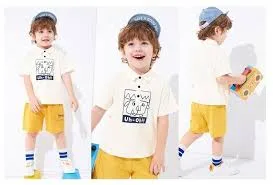
The trend’s early seeds can be traced back to the 19th century and the immense influence of royalty. In a famous 1846 portrait by Franz Winterhalter, Queen Victoria dressed her son, Albert Edward, Prince of Wales, in a miniature sailor suit identical to those worn by the Royal Navy. This single act sparked an international craze for sailor suits for both boys and girls that lasted for decades. It was an early, powerful example of a parent’s style choice for their child influencing society at large. This wasn’t about “cuteness” in the modern sense; it was about instilling values, class identity, and a sense of national pride.
The trend gained domestic traction in the 1950s, particularly in suburban America. The post-war era idealized the nuclear family, and fashion reflected this. McCall’s and other pattern companies began producing “mother-daughter” dress patterns, allowing home sewers to create identical outfits. These matching floral frocks and crisp aprons became a wholesome symbol of domestic harmony, feminine solidarity, and the ideal American family. It was a visual representation of a mother passing down her values and skills to her daughter.
The Rise of Designer and Celebrity Influence
For decades, matching fashion remained largely a homemade or specialty-catalogue phenomenon. The real shift towards a high-fashion trend began in the late 20th and early 21st centuries when luxury designers recognized the untapped market for children’s wear. Brands like Jean-Paul Gaultier, and later Dolce & Gabbana, Burberry, and Gucci, began creating children’s lines that were not just inspired by their adult collections, but were direct, miniature replicas of their runway pieces. Suddenly, a child could own a tiny version of their mother’s iconic trench coat or their father’s signature loafers.
This move was amplified exponentially by celebrity culture. When photos surfaced of celebrity parents like David and Victoria Beckham, Katie Holmes and Suri Cruise, or Beyoncé and Blue Ivy Carter in coordinated or matching outfits, it created a media frenzy. These images turned the “Mini-Me” look from a sweet family gesture into an aspirational status symbol. It signaled not only a close parent-child bond but also access, wealth, and impeccable taste. The celebrity endorsement provided the trend with a level of glamour and desirability it had never had before.
The Social Media Catalyst: From Private Moment to Public Statement
If celebrities lit the match, social media poured gasoline on the fire. Platforms like Instagram, Pinterest, and Facebook completely transformed the “Mini-Me” phenomenon. Twinning was no longer a private moment for a family outing or a professional photoshoot; it became a public declaration, easily shared with the world.
The visual nature of these platforms was perfect for the trend. A photo of a parent and child in matching outfits is instantly understandable, emotionally resonant, and highly “likeable.” The proliferation of hashtags like #MiniMe, #Twinning, #MommyAndMe, and #LikeMotherLikeDaughter created searchable, global communities built around this shared aesthetic. This allowed everyday parents to participate in and contribute to the trend, democratizing it in the process.
This digital explosion also gave rise to the “family influencer,” individuals and families who built entire online brands around their coordinated style. Their curated images of picture-perfect family life, often featuring matching outfits from sponsored brands, presented a highly polished and aspirational version of the trend, further fueling its popularity and turning it into a marketable commodity. Social media made “Mini-Me” fashion more visible, accessible, and desirable than ever before.
Part 2: The Psychology of a Perfect Match – Why We Love to Twin
The enduring appeal of the “Mini-Me” trend lies in its ability to satisfy deep-seated psychological needs for both the parent and the child. It operates on multiple levels, from expressing identity and connection to fulfilling a child’s natural desire to emulate their heroes.
For the Parents: A Statement of Identity and Connection
For a parent, the choice to dress their child like themselves is a complex and often subconscious act, driven by a desire for connection, pride, and self-expression.
- A Visual Symbol of the Family Unit: At its most fundamental level, matching outfits are a powerful, non-verbal signal that says, “We are a team. We belong together.” In a world that can feel fragmented, presenting a unified, cohesive front is reassuring. It’s a way of drawing a visual boundary around the family unit, reinforcing its identity and bond in a public space. For blended families, it can also be a gentle way to visually integrate and strengthen new family ties.
- An Expression of Pride and Affection: The “cuteness factor” is an undeniable driver. Parents are overwhelmingly proud of their children, and dressing them in their own likeness is a playful and joyful way to express that pride. It’s a visual manifestation of the phrase, “They’re a chip off the old block.” This act can be a profound source of joy, turning the mundane task of getting dressed into a fun and loving interaction.
- Nostalgia and a Bridge to the Past: For many parents, dressing their child in a miniature version of their own clothing can be a deeply nostalgic act. It can be a way to connect with their own childhood memories or to see their own past selves reflected in their offspring. It allows them to share a piece of their personal style and identity with their child, creating a tangible link between generations.
- The “Instagrammable” Moment and Social Validation: In the digital age, we cannot ignore the influence of social currency. Matching family outfits are inherently photogenic. They create visually appealing, cohesive, and heartwarming images that perform exceptionally well online. The positive feedback—the likes, the comments, the shares—provides a hit of social validation that reinforces the behavior. It confirms to the parent that their family is perceived as happy, connected, and stylish.
For the Child: A World of Emulation and Security
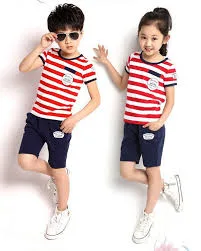
While the decision to twin usually originates with the parent, the child is not just a passive participant. For young children, in particular, matching a parent can be a deeply fulfilling and reassuring experience.
- The Power of Imitation and Role Modeling: Children learn about the world by imitating the most important people in it: their parents. From a developmental perspective, this imitation is crucial for learning social behaviors, language, and skills. Dressing like a parent is a very literal form of this imitation. It allows the child to feel “big,” competent, and closer to their hero. It’s a form of aspirational dress-up where they get to play the part of the person they admire most.
- Reinforcing Security and Belonging: For a young child, the world is a vast and sometimes intimidating place. Their family is their anchor of safety and security. Visually matching a parent can be a powerful emotional reassurance of their place within that safe harbor. It wordlessly communicates, “You are one of us. You are loved. You belong.” This sense of belonging is fundamental to a child’s healthy emotional development.
- Simply Fun and Playful: We must not overlook the simple joy of it. For many kids, matching with a parent is just fun. It feels like a special secret, a game they get to play. It transforms the daily routine of getting dressed into a shared activity, a moment of connection and playfulness that strengthens the parent-child bond.
A Balanced View: The Potential Psychological Downsides
While the trend is largely positive, it’s important for parents to be mindful of its potential pitfalls, especially as children grow older and begin to form their own distinct identities.
- Stifling Individuality: Identity formation is a key developmental task of childhood and adolescence. This includes developing a personal sense of style as a form of self-expression. If the “Mini-Me” trend is enforced too strictly or for too long, it can potentially hinder this process. A child needs the freedom to experiment with their own tastes, even if that means mismatched socks and clashing patterns.
- The Line Between Connection and Control: There is a fine line between a fun, shared activity and a parent exerting excessive control over their child’s appearance. The trend should be a “we” activity, not a “me” dictate. If a child begins to resist, it’s crucial for the parent to respect their evolving need for autonomy.
- Pressure to be a “Miniature Adult”: In its more extreme forms, the trend can place subtle pressure on a child to be a perfect reflection of the parent, a “trophy child” whose appearance is curated for public consumption. It’s important that the child’s comfort and freedom to be a kid—to play, get messy, and be themselves—always takes precedence over maintaining a perfect aesthetic.
Part 3: The “Mini-Me” Style Guide – How to Embrace the Trend Thoughtfully
Twinning doesn’t have to be an all-or-nothing, head-to-toe affair. There are numerous ways to embrace the trend, ranging from the bold and identical to the subtle and sophisticated. The key is to find a style that feels authentic to your family and is appropriate for the age and personality of your child.
Level 1: The Identical Match
This is the most literal interpretation of the trend: parent and child in the exact same outfit.
- How to do it: This involves finding brands that specifically sell identical pieces in adult and child sizes.
- Best for: Special occasions (holidays, family photoshoots, weddings), vacations, and generally with younger children (toddlers and preschoolers) who are most enthusiastic about direct imitation.
- Tips: Prioritize your child’s comfort above all. Ensure the style is age-appropriate and allows for movement and play. A matching formal dress might be beautiful for a photo, but impractical for a day at the park.
Level 2: The Coordinated Look (The Art of Complementing)
This is a more nuanced and often more stylish approach. Instead of identical pieces, the family’s outfits complement each other through a shared element.
- Color Palette Coordination: This is the easiest and most effective method. The family dresses within a defined color scheme (e.g., earthy tones of olive, beige, and cream; or a classic nautical look with navy, white, and a pop of red). Each person wears a different outfit, but the shared palette creates a beautifully cohesive look.
- Print and Pattern Harmony: This involves echoing a print or pattern across different family members. For instance, a mother might wear a leopard print skirt, while her son wears a t-shirt with a small leopard graphic. Or a father’s plaid shirt can be complemented by his daughter’s plaid headband or skirt.
- Shared Fabric or Texture: Create a unified look by focusing on a common material. Think of a “denim family” day, where everyone wears their favorite denim item (jeans, jacket, dress, or dungarees). In colder months, a shared texture like a chunky cable-knit sweater or corduroy can tie everyone’s individual outfits together.
Level 3: The Thematic Approach
This is about capturing a shared mood or aesthetic rather than matching specific items.
- How to do it: The family decides on an overall “vibe” for the day. It could be “bohemian festival,” “preppy weekend,” “urban streetwear,” or “rock-and-roll.” Each person then interprets that theme through their own individual style.
- Why it works: This approach allows for the most individuality and is a great way to continue the trend with older children and teenagers who want more control over their own clothing choices but may still enjoy participating in a family “look.”
Level 4: The Single-Item Sync
This is the most subtle, accessible, and often “coolest” way to twin. It’s all about a single, shared accessory or anchor piece.
- Matching Footwear: A family sporting matching sneakers (like classic Converse, Vans, or Adidas Stan Smiths) is an instantly stylish and effortless way to connect their looks.
- Coordinated Headwear: Matching beanies in the winter or baseball caps in the summer is another easy entry point.
- Identical Outerwear: A shared style of jacket—be it a classic denim jacket, a leather moto jacket, or a timeless trench coat—worn over completely different individual outfits, creates a strong visual link.
- The Family Graphic Tee: Getting custom or matching graphic t-shirts for a special event, vacation, or just for fun is a classic and beloved twinning tradition.
Key Tip: The most successful “Mini-Me” styling involves the child’s enthusiastic participation. As they grow, involve them in the decision. Ask, “Should we wear our matching blue shirts today?” or “Do you want to wear your cool sneakers just like Dad?” Giving them a choice transforms it from a parent’s directive into their shared, special thing.
Part 4: The Business of Twinning – How the Market is Responding
The “Mini-Me” trend is not just a social phenomenon; it’s a lucrative and rapidly growing segment of the global apparel industry. Brands and retailers have been quick to capitalize on parents’ desire to coordinate with their children, creating a thriving market built on the aesthetics of family unity.
- The Rise of Specialized “Mommy and Me” Brands: A whole cottage industry of brands has emerged that focuses exclusively on matching or coordinated clothing for families. Brands like Ivy City Co., Posh Peanut, and Little Sleepies have built loyal followings with their collections of matching dresses, pajamas, and swimwear. They market their products not just as clothing, but as tools for creating memories, making them experts in selling the emotion behind the trend.
- Mainstream Retailers Are All In: It didn’t take long for large, mainstream retailers to incorporate the trend into their offerings. Stores like Gap, Old Navy, H&M, and Target now regularly feature “family matching” sections, especially around holidays. Matching flannel pajamas for Christmas, coordinated pastels for Easter, and patriotic red, white, and blue for the 4th of July have become retail staples. This has made the trend highly accessible and affordable for the average family.
- Luxury Fashion’s High-End Embrace: The trend’s journey to the pinnacle of fashion was solidified when luxury houses began offering miniature versions of their most iconic, “it” pieces. A child can now sport a Fendi logo sweatshirt, a Gucci belt bag, or a Burberry trench coat that is a perfect replica of the adult version. For the ultra-wealthy, this is the ultimate status symbol, combining luxury branding with the public display of family affection. This high-fashion adoption has lent the entire trend an air of legitimacy and chicness.
The business of twinning thrives because it sells more than just a product. It sells an experience, an identity, and an idealized image of family life. It taps into the powerful emotional desire for connection and packages it in a photogenic, shareable format, creating a self-perpetuating cycle of consumer demand and market supply.
Conclusion: A Visual Language of Love
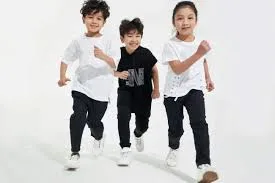
The “Mini-Me” fashion trend, in all its forms, is a fascinating mirror reflecting our modern values around family, identity, and social connection. It is a phenomenon with a history rooted in class and tradition, a psychological core driven by love and imitation, and a future being shaped by social media and commerce.
Far from being a frivolous or superficial pursuit, the act of matching with our children can be a profound and playful expression of our bond. It is a visual language of love, a daily reminder that we are part of a team. At its best, it fosters connection, creates joyful memories, and celebrates the unique unit that is a family.
The key to embracing the trend successfully lies in keeping it joyful, prioritizing the child’s comfort and agency, and knowing when to evolve. As a child grows and their own style blossoms, the identical outfits may give way to a more subtle coordination—a shared color, a matching pair of boots. The form may change, but the sentiment remains. Whether in a full matching ensemble or simply a shared smile of recognition, the “Mini-Me” spirit is a celebration of the beautiful, powerful connection that will always be in style.
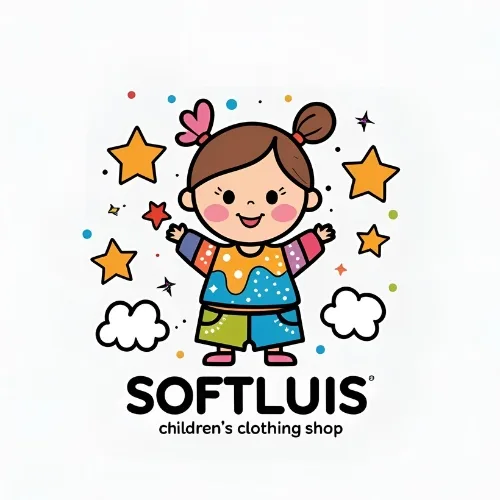
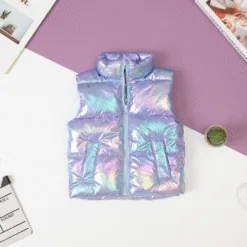 Boys and girls solid color vest, large size 8/14 years old
Boys and girls solid color vest, large size 8/14 years old 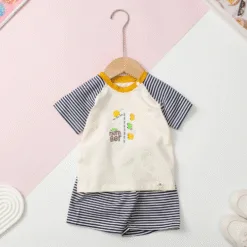 H546 Newborn set-SS01_ 9/36m printed
H546 Newborn set-SS01_ 9/36m printed 